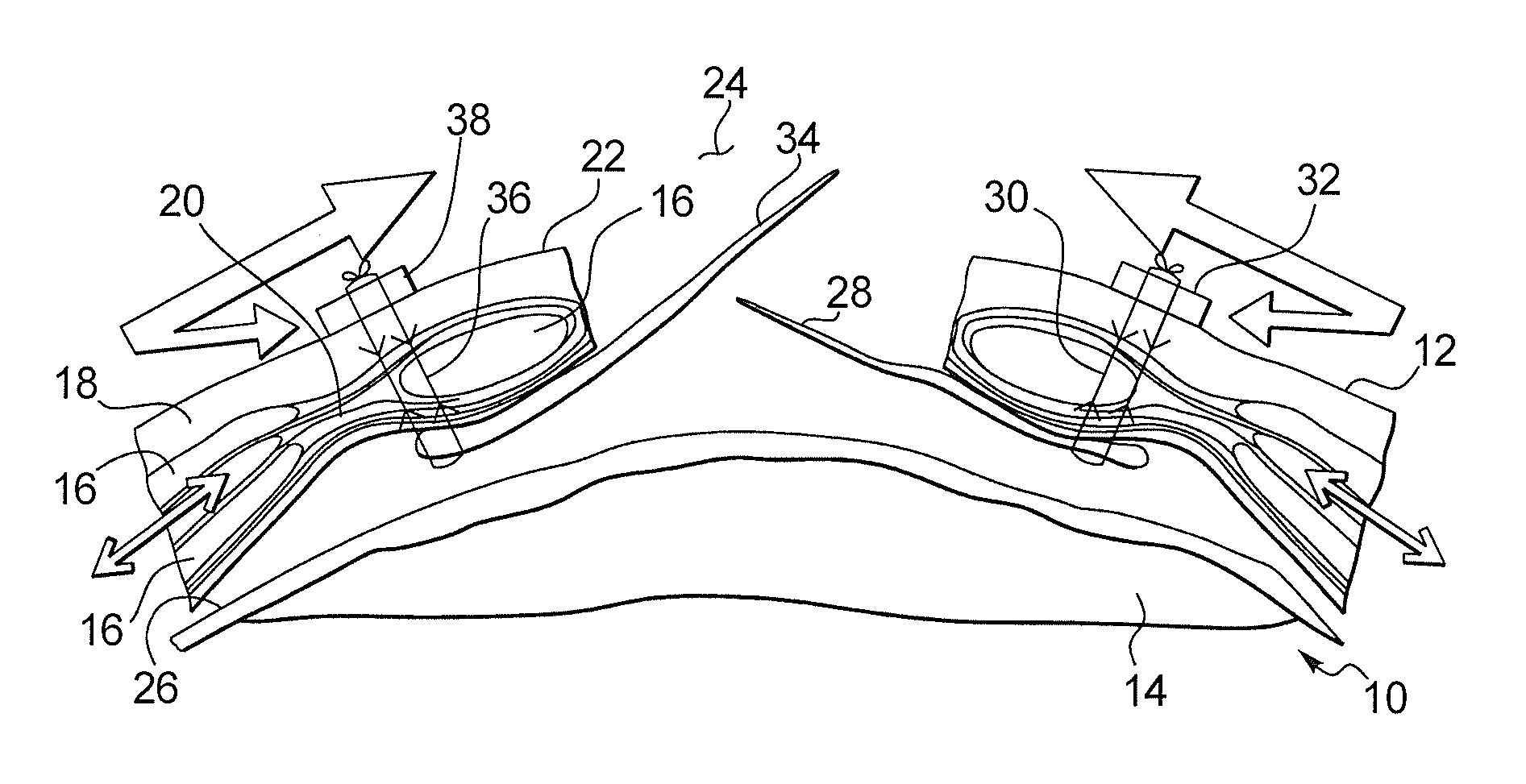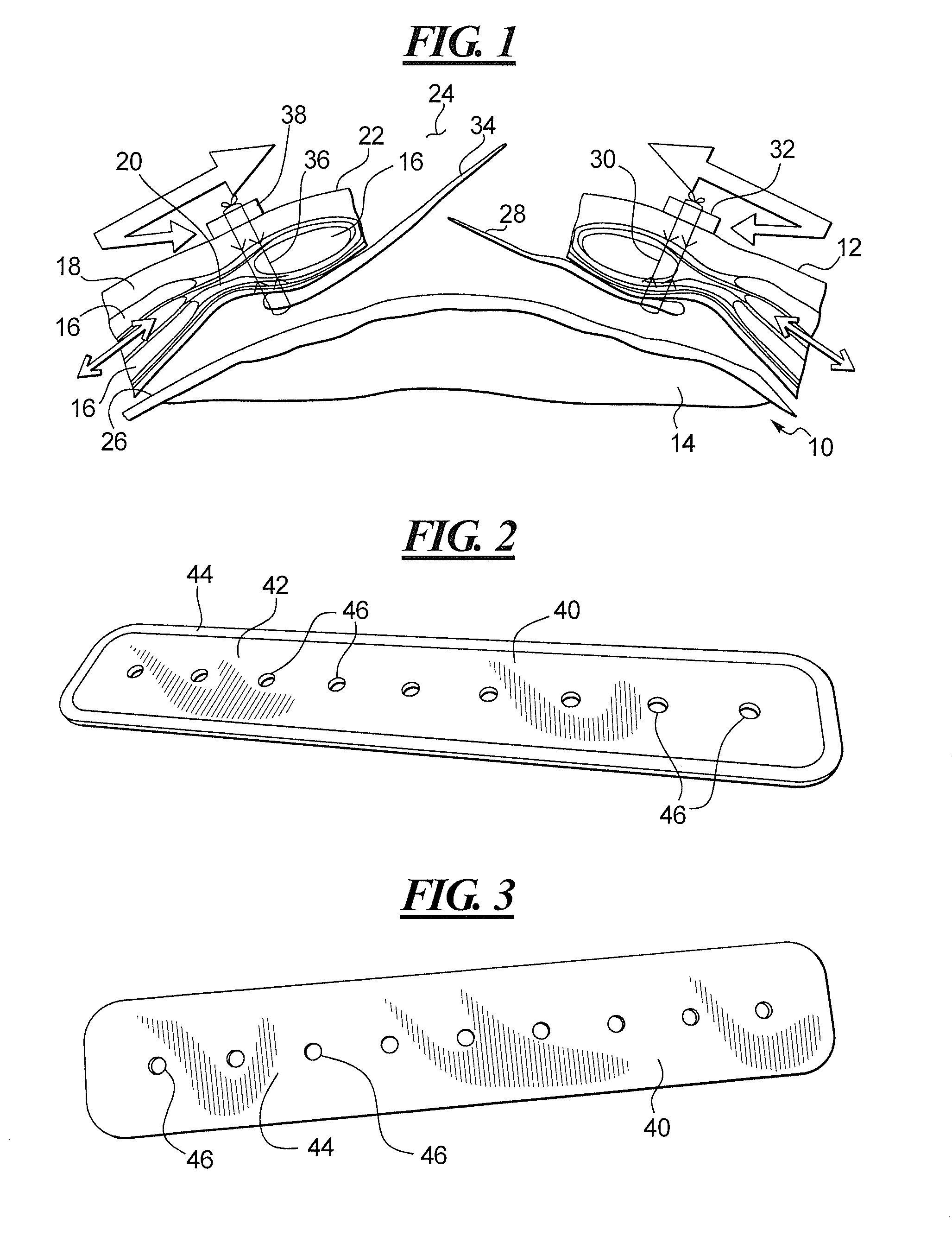Method and apparatus for surgically closing an open abdomen
a technology for open abdomen and surgical closure, which is applied in the field of methods and apparatus for surgically closing acute and chronic open abdomen wounds, and can solve the problems of inability to immediately surgically close without risk to the patient, swelling of the viscera, and death of the patien
- Summary
- Abstract
- Description
- Claims
- Application Information
AI Technical Summary
Benefits of technology
Problems solved by technology
Method used
Image
Examples
Embodiment Construction
[0034]Turning first to FIG. 1, a patient 10 has an abdominal wall 12 within which is the patient's bowel and other visceral organs 14. The abdominal wall 12 includes muscles 16, fat 18, connective tissues 20, and skin 22. An opening 24 in the abdominal wall 12 has been formed, usually by a surgical incision although it is possible the opening 24 may have been the result of an injury or otherwise.
[0035]The patient's bowel and viscera 14 may have been injured as a result of disease, accident, battlefield injury, gunshot or stab wound, or otherwise which requires the abdominal wall to be opened so that the surgeon can repair the injury, treat the disease, relieve pressure within the abdominal cavity, or for other reasons. The opening 24 in the abdominal wall 12 may not be closed at the conclusion of the initial treatment, for example if the bowel and viscera 14 are swollen, if the surgical repair or treatment requires additional steps that require opening of the abdominal cavity, or fo...
PUM
 Login to View More
Login to View More Abstract
Description
Claims
Application Information
 Login to View More
Login to View More - R&D
- Intellectual Property
- Life Sciences
- Materials
- Tech Scout
- Unparalleled Data Quality
- Higher Quality Content
- 60% Fewer Hallucinations
Browse by: Latest US Patents, China's latest patents, Technical Efficacy Thesaurus, Application Domain, Technology Topic, Popular Technical Reports.
© 2025 PatSnap. All rights reserved.Legal|Privacy policy|Modern Slavery Act Transparency Statement|Sitemap|About US| Contact US: help@patsnap.com



